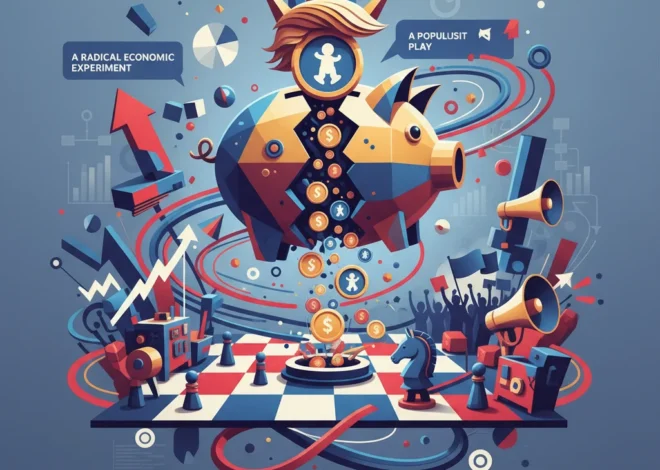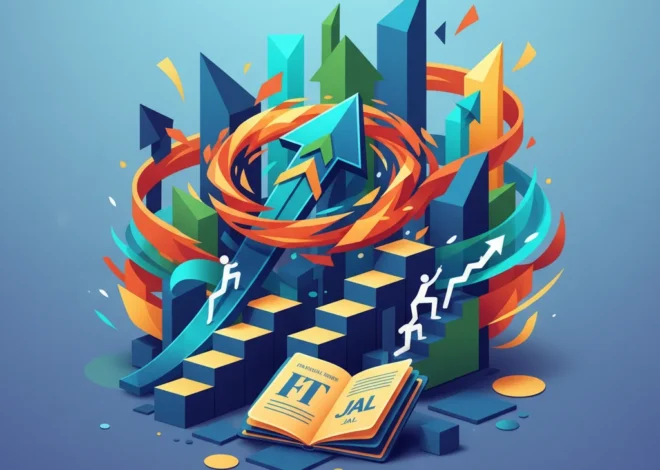The Milei Paradox: Argentina’s Economic Chainsaw and its Allure for Global Investors
In the theater of global economics, few entrances have been as dramatic as that of Javier Milei, Argentina’s self-proclaimed “anarcho-capitalist” president. Wielding a chainsaw on the campaign trail as a visceral symbol of his intent to slash state spending, Milei promised a revolution. Six months into his presidency, he is delivering a form of radical “shock therapy” that has plunged millions of Argentinians into poverty while simultaneously earning applause from the International Monetary Fund (IMF) and figures like Donald Trump. This is the great paradox of the Milei experiment: a nation enduring immense pain at home, while its leader is lauded abroad as a free-market messiah.
This high-stakes economic gamble is more than just a national story; it’s a real-time case study for investors, finance professionals, and business leaders worldwide. It poses a critical question: Is this brutal austerity the necessary medicine to cure a chronically ill economy, or a reckless act that could trigger a social collapse? As the world watches, the future of Argentina’s economy, its stock market, and its place in the global financial system hangs in the balance.
The Diagnosis: A Century of Economic Malaise
To understand the appeal of a leader with a chainsaw, one must first grasp the depth of Argentina’s economic despair. For decades, the nation has been caught in a debilitating cycle of soaring inflation, currency devaluation, and sovereign debt defaults. When Milei took office in December 2023, he inherited an economy on life support. Inflation was raging at an annual rate of 211%, the highest in the world. The central bank was printing money uncontrollably to finance government deficits, and poverty was endemic.
This wasn’t a temporary downturn; it was the culmination of populist policies, protectionism, and fiscal mismanagement that had eroded confidence in the nation’s banking and financial institutions. For many Argentinians, the status quo was untenable, creating a fertile ground for a leader promising to tear down the entire rotten structure. Milei’s diagnosis was clear: the state was not the solution; it was the disease.
The “Shock Therapy” Prescription: Milei’s Economic Blueprint
Milei’s approach is a textbook example of economic shock therapy—a rapid, aggressive implementation of free-market policies designed to stabilize an economy. His administration wasted no time in rolling out what he termed a “chainsaw plan.” The goal is to achieve a zero fiscal deficit at any cost, believing this is the only way to kill inflation and restore long-term stability to the country’s finance and trading environment.
Here is a breakdown of the key measures being implemented and their immediate consequences:
| Policy Measure | Intended Economic Goal | Observed Short-Term Impact |
|---|---|---|
| 54% Peso Devaluation | Make exports more competitive, reduce import demand, and align the official exchange rate with the market rate. | Massive spike in the cost of living as import prices soared, eroding purchasing power. |
| Slashing Public Spending | Eliminate the fiscal deficit, stop the need for monetary printing, and curb inflation at its source. | Paralysis of public works projects, layoffs of over 50,000 state employees, and cuts to social subsidies. |
| Reducing Ministries | Dramatically shrink the size and cost of the federal government, from over 18 ministries to nine. | Disruption of government services and a powerful symbolic message of austerity. |
| Deregulation “Mega-Decree” | Remove price controls, liberalize labor laws, and open the economy to competition and private investment. | Increased prices for essentials like healthcare and rent; widespread protests and legal challenges. |
These policies, while celebrated by monetarist economists and the IMF for their fiscal discipline, have inflicted immediate and severe pain. The poverty rate has surged, with a study from the Catholic University of Argentina estimating it hit 57% in January 2024, the highest in two decades. On the streets of Buenos Aires, soup kitchens are overwhelmed, and protests against the austerity measures are a regular occurrence.
A Nation Divided, A Darling Abroad
The starkest feature of Milei’s presidency is the chasm between domestic sentiment and international perception. While Argentinians grapple with hyper-recession and disappearing savings, global financial markets and right-leaning political figures have been cheering him on. Why?
- Fiscal Credibility: For decades, investors have seen Argentina as a pariah state, notorious for defaulting on its debt. Milei’s obsession with achieving a fiscal surplus, however painful, signals to bondholders and the IMF that Argentina might finally be serious about getting its financial house in order. This has been reflected in a rally for the country’s bonds and stock market.
- Pro-Business Ideology: Milei’s rhetoric is unabashedly pro-market. He speaks the language of capital, promising deregulation, privatization, and an end to the “political caste” he blames for the country’s woes. This is music to the ears of multinational corporations and investors looking for new opportunities in emerging markets.
- A Global Populist Icon: Milei has become a hero for a global movement that merges libertarian economics with right-wing cultural politics. His meetings with figures like Donald Trump and Elon Musk are not just photo-ops; they represent an ideological alignment that sees big government and “socialism” as the primary enemies of prosperity.
This international support provides Milei with crucial political capital. When the IMF praises his “ambitious” plan, it helps legitimize his policies both at home and abroad, even as his own people take to the streets. The paradox is that the very policies causing domestic misery are the ones generating international confidence in the country’s long-term economic prospects.
The Future: A New Economic Model or a Cautionary Tale?
President Milei is walking a tightrope. On one side is the promise of economic stabilization, taming inflation, and unlocking Argentina’s vast potential in sectors like energy and agriculture. This is the future that has the world of finance and investing so intrigued. On the other side is the risk of a deep, prolonged recession and social explosion that could make the country ungovernable, undoing any progress made.
His success or failure will have implications far beyond Argentina’s borders. If his shock therapy works—if inflation is tamed and sustainable growth returns—his model could become a blueprint for other struggling nations and a major victory for libertarian economics. It would demonstrate that radical, painful fiscal consolidation is a viable, if brutal, path to recovery.
However, if it fails—if the social fabric tears and the economy remains mired in recession—it will serve as a stark cautionary tale about the human cost of ideological extremism. It would reinforce the argument that macroeconomic stability cannot be pursued without a consideration for social equity and public consent.
For now, Argentina remains the world’s most fascinating and perilous economic laboratory. Investors, economists, and policymakers are all watching with bated breath. The chainsaw has been unleashed, and the question remains whether it will carve a path to a brighter economic future or simply leave a trail of destruction.


